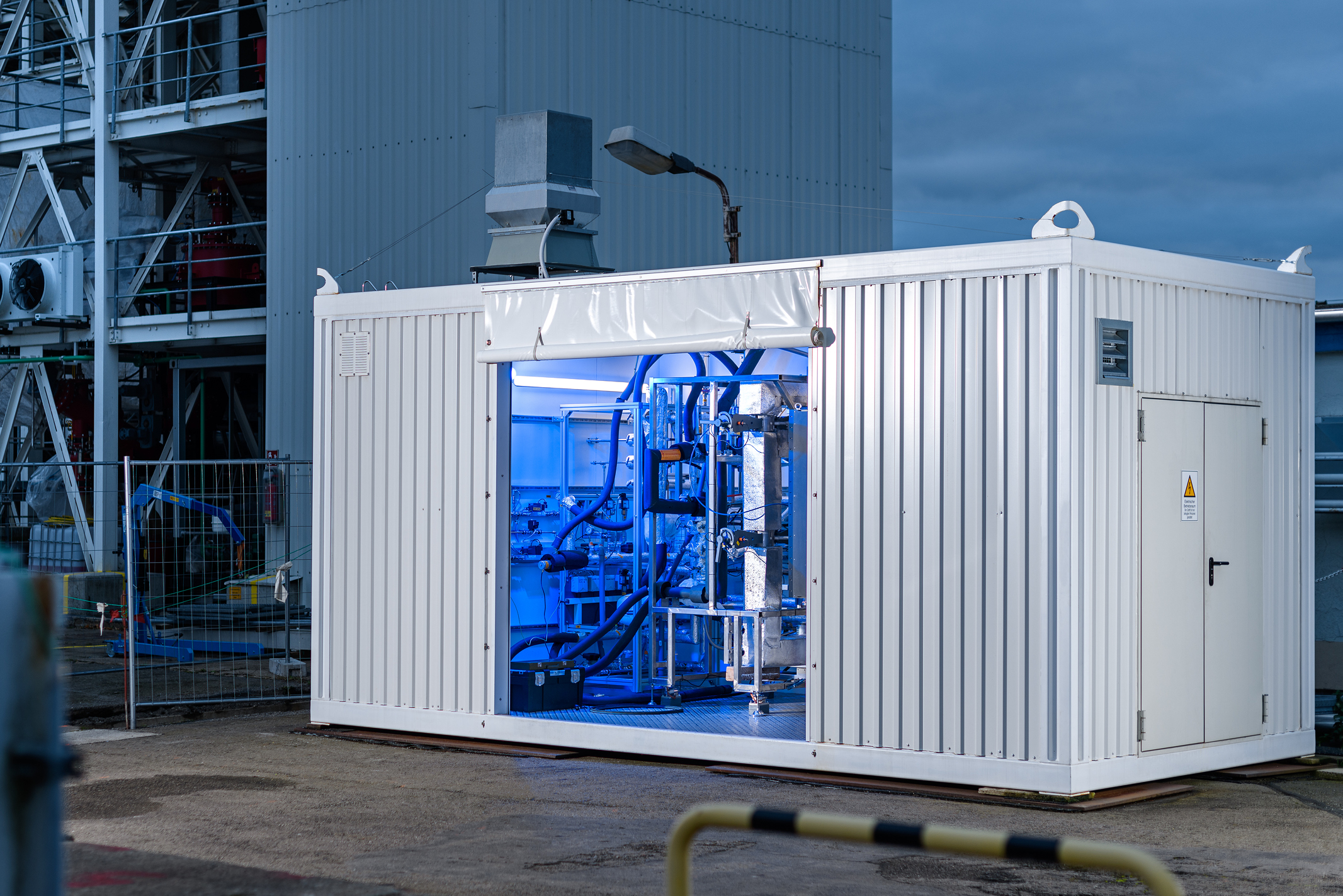Test operation demonstrates the efficiency, safety and durability of AMBARtec's H2 storage systems
DRESDEN, 19 August 2024. AMBARtec AG has successfully completed and evaluated the multi-month field test of its H2compact 100 iron oxide-based hydrogen (H2 ) storage system. The results confirm the excellent energy balance of the entire process, from H2 production to storage charging and hydrogen discharge. By an optimal system integration of a high-temperature electrolysis (SOEC), efficiencies of over 80 % can be achieved. When the conversion to electricity via a high-temperature fuel cell (SOFC) is included in the analysis, the electricity-to-electricity analysis shows unprecedented energy efficiencies of around 60 %. The results also show the high cycle stability of the iron oxide nuggets.Multi-month field test
Since September 2023, AMBARtec has been testing its 7.5 kg H2 storage system in full operation with hydrogen. The aim was also to optimise the plant control and find the best system configuration in terms of energy balance.
Maximum energy efficiency: AMBARtec's storage system + SOEC
The energy balance analysis shows that the AMBARtec storage system is ideally suited for combination with a SOEC. The determined efficiency is over 80 % - a very high value compared to other H2 storage systems. This is due to the system integration of electrolysis and storage.
The H2 produced in the electrolysis process leaves at a temperature level of over 500°C, which is also required for storage - this significantly reduces the heating energy required.
The water vapor produced during the reduction of the iron oxide can be fed back into the high-temperature electrolysis. This means that water evaporation is no longer required in the electrolysis process. This greatly increases the efficiency of the electrolysis process.
Use case: Electricity storage
If the SOEC/AMBARtec storage system combination is supplemented with a solid oxide fuel cell (SOFC), the efficiency for the entire electricity-to-electricity process is around 60%.
By comparison, the efficiency of electricity-to-electricity-systems using PEM electrolysis and conventional storage systems such as liquid hydrogen, LOHC or pressurized hydrogen is less than 40%.
Durable storage material
Examinations of the iron oxide nuggets used show the high mechanical and chemical stability of the material. There are no changes in the storage capacity or other signs of wear.
Safety concept validated
AMBARtec has updated all tests and documents required for explosion protection. The basic plant safety concept is applicable to all storage tank sizes up to the planned 6,000 litre storage tanks and does not require any significant changes.
Further development of the system design
The test operation also served to improve the plant control, the heating system and the flow conditions in the storage system. AMBARtec used the results to derive an optimized design and optimized operating conditions for the next generation of storage tanks.
Outlook
AMBARtec is currently scaling up the hydrogen storage system to a volume of 1,000 litres. It has a storage capacity of 90 kg of hydrogen. Commissioning and testing will take place in the coming months.
In the future, AMBARtec will integrate its 1,000-litre modules into a standard 20-foot container that can be handled and transported using standard transport logistics such as cranes, trucks, trains and ships, with a capacity of 600 to 900 kg H2 (20 to 30 MWh) per container.
Press contact:
Dr. Ines Bilas
AMBARtec AG
Head of Marketing and Communication
Phone: +49 172 234 11 00
Email: ines.bilas@ambartec.de
Website: www.ambartec.de

